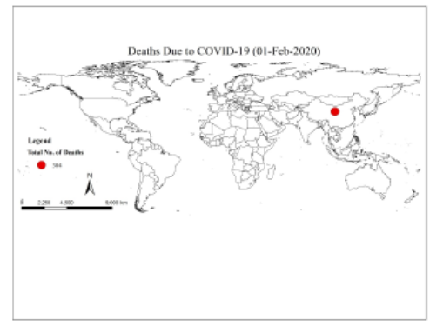
Geographical analysis
Department of Geography & GIS

Department of Geography & GIS

Geographical analysis
Year: 2024, Volume: 13, Issue: 1, Pages: 1-6
Original Article
Pradip Ashok Saymote1∗
1Department of Environmental Studies (Commerce), SVKM’s Mithibai College of Arts, Chauhan Institute of Science and Amrutben Jivanlal College of Commerce & Economics (Autonomous), Vile Parle (W), Mumbai, 400056, India
*Corresponding Author
Email: [email protected]
Received Date:10 February 2024, Accepted Date:15 February 2024
Geography subject bridges the natural sciences with the social sciences. A map is the most powerful component of geographical studies because a map can express huge spatial information concisely and help users to understand particular phenomena effectively. The COVID-19 outbreak has spatial as well as temporal dimensions and it can be well understood through maps. This study highlights the shifting epicenter of the pandemic and delineates key milestones in its rapid global spread, from the early stages in China, and Western Pacific countries to its peak in the United States via Europe. It started in the month of January and the subsequent months reached an alarming situation of infections and fatalities of the pandemic that covered from local to global scale. In a mere four months, the coronavirus rapidly transcended geographical boundaries, encompassing the entire globe. The study utilizes secondary data from the World Health Organization and employs GIS Open Source software to map the diffusion and intensity of the outbreak. The maps, produced using GIS software, serve as effective visual aids, offering critical insights into the spatial distribution of COVID-19 cases and deaths which underscores the holistic nature of geographical studies in understanding pandemics. This is an exploration of the spatio-temporal dynamics of the COVID-19 pandemic, through geospatial mapping under health geography to understand its multifaceted dimensions.
Keywords: COVID19, Spatiotemporal mapping of COVID-19, Diffusion, Pandemic, Health geography
© 2024 Saymote. This is an open-access article distributed under the terms of the Creative Commons Attribution License, which permits unrestricted use, distribution, and reproduction in any medium, provided the original author and source are credited.
Published By Bangalore University, Bengaluru, Karnataka
Subscribe now for latest articles and news.